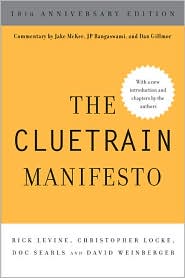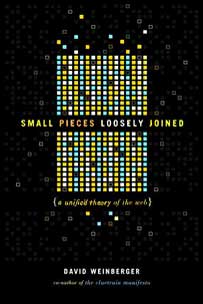October 23, 2014
Pieceful Collaboration
I gave a talk last night at the BookBuilders of Boston collaboration awards. It’s a non-profit that since 1937 has networked publishers, book manufacturers, and other book folk…although I don’t think people would have described it as “networking” back then. The nominees each gave a 2.5 minute presentation on their collaborative publishing project, many of which were very cool. Plus it was in the Brattle Theater.
I was the filler as the judges went into a sealed room to decide on the winners. So I gave a 30 talk pitched around a pun that I sort of like: a pieceful difference.
The idea was that lots of collaborative efforts bring together multiple people to build a single object — a barn raising or a Wikipedia page. But other collaborations break something apart and allow different people to build different things.
The ability to bring strangers together around a project is a gift of the Net. But so is its making available lots of little pieces that can be made into mosaics by a mosaic of people. The Johnny Cash Project is one sort of example. But so is any set of things created from stuff retrieved through an API or mashed-up APIs.
I’m not sure why I am drawn to pieceful collaboration, other than because of the cheap pun. I guess I like the way individuality is maintained around a shared but differentiated set of materials. I’m a little surprised. I thought I was less of an individualist than that.








